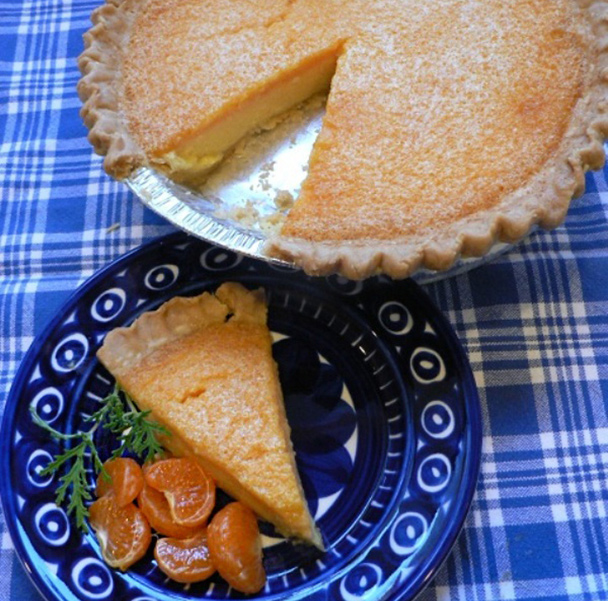Does every Southerner have a sweet tooth? An insatiable one, I’d say, and I wonder if our chess pies (a.k.a. sugar pies) are to blame. Unique to the South, these pies—all butter, sugar, and eggs—have claimed pride of place on our dessert tables for nearly 200 years. And I think I know why.
From Colonial days onward, sugar was grown and refined in the Deep South, which meant that sugar was more affordable and widely available than elsewhere in young America. Moreover, savvy Southern cooks soon discovered that most things achingly sweet didn’t spoil when kept in pie safes at room temperature, so these “chest”—or “keeping”—pies became “chess” pies in Southern-speak, thanks to our habit of dropping final t’s.
But that’s only one explanation for the chess pie’s unusual name. The consensus among food historians is that chess is simply a corruption of the English lemon cheese (lemon curd), a supremely popular chess pie filling. As culinary sleuth Karen Hess writes in her historical notes accompanying the facsimile edition of Mary Randolph’s original 1824 Virginia House-wife, “Since the archaic spelling of cheese often had but one ‘e’ we have the answer to the riddle of the name of that southern favorite ‘Chess Pie’.” Strangely, however, there is no chess pie by that name in The Virginia House-wife, this country’s first Southern cookbook. Damon Lee Fowler, arguably the South’s foremost food historian today, explained it thus to me: “Mary Randolph had no recipe for chess pie by name, nor even for the curd pie/cheesecake in crust that was its ancestor. She does have a lemon pudding that is basically lemon chess pie…and included a transparent pudding (again a custard pie in crust) in the 1825 edition that is for all intents and purposes chess pie.”
Mary Randolph’s Transparent Pudding
Beat eight eggs very light, add half a pound of pounded sugar, the same of fresh butter melted, and half a nutmeg grated; sit it on a stove, and keep stirring till it is as thick as buttered eggs—put a puff paste in a shallow dish, pour in the ingredients, and bake it half an hour in a moderate oven; sift sugar over it, and serve it up hot.
Fowler adds that the first recipe he has found actually called chess pie turned up in Southern Cooking (1928) by Mrs. S. R. Dull, though “there are surely older ones,” he contends. “Her chess pie is butter, sugar, eggs, and vanilla…essentially the same as the Transparent Puddings found in everyone from the 1825 edition of The Virginia House-wife forward.”
Today there are many different chess pies, including latter-day versions of Transparent Pudding, with fillings that now often contain both vinegar for edge and stone-ground cornmeal for a slightly thicker consistency. Then there’s the ambrosial brown sugar pie (sort of a pecan pie sans pecans), which I first tasted at the age of 5 in the cafeteria of my Raleigh grammar school and adore to this day. The list goes on with the profoundly sensuous Jefferson Davis Pie (a cream-rich chess named in honor of the president of the Confederacy) and sweet-sour lemon chess pie—not to mention pecan pie and chocolate chess pie, either plain or spiked with Kentucky’s best. And these, praise be, are just the beginning, thanks to the innovative young Southern pastry chefs now dreaming up new spins on the South’s beloved sugar pies—lemongrass, blood orange, pomegranate, and other variations only slightly less sinful than the original chess pie.



 Pinterest
Pinterest


